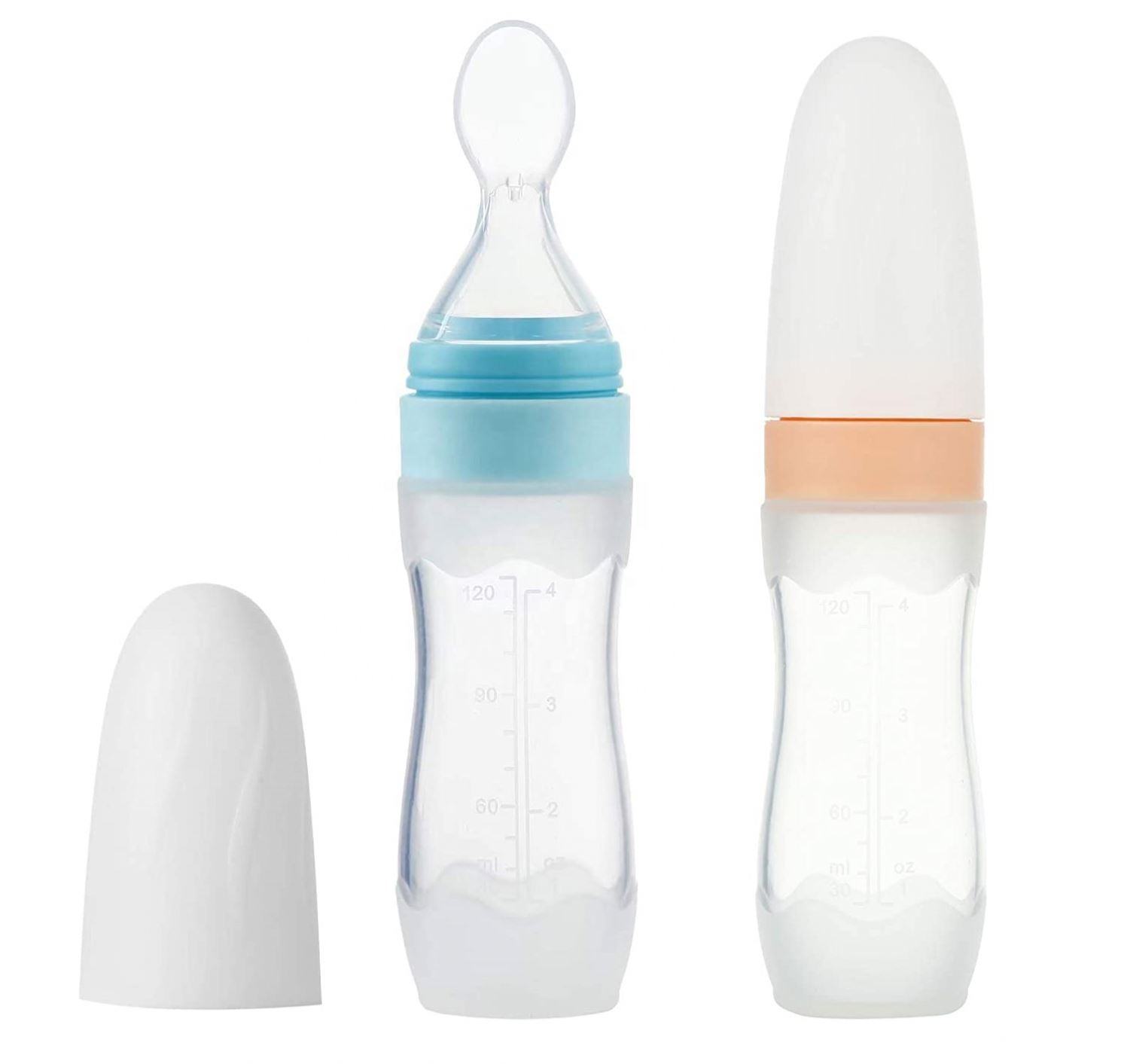콘텐츠
아기를 키우는 여정은 기쁨과 도전으로 가득 차 있으며, 특히 아기에게 수유를 할 때는 더욱 그렇습니다. 올바른 수유 방법은 아기에게 적절한 영양을 공급할 뿐만 아니라 건강한 성장과 발달을 촉진합니다. 이 글에서는 신생아의 젖니가 나는 시기에 수유를 도와주는 다양한 실리콘 수유 제품을 살펴봅니다.
신생아~6개월: 모유 수유 또는 분유 수유
신생아 시기에는 모유 수유가 최선의 선택입니다. 모유는 필요한 모든 영양소를 공급하고 아기를 질병으로부터 보호하는 항체를 함유하고 있습니다. 하지만 모유 수유가 불가능할 때는 실리콘 젖병이 아기 수유에 이상적인 대안이 될 수 있습니다. 이 젖병은 BPA가 없는 식품용 실리콘으로 만들어졌으며 유방의 자연스러운 모양과 유사한 젖꼭지 디자인으로 아기가 모유 수유와 젖병 수유를 쉽게 전환할 수 있도록 도와줍니다.


수유 팁:
- 일반적으로 하루에 8~12회 정도 온디맨드 방식으로 피드합니다.
- 감염을 예방하기 위해 젖병과 젖병 구성품을 청결하게 관리하세요.
6개월~1년: 고형 식품 소개
아기가 생후 6개월 정도가 되면 고형식을 먹이기 시작할 때입니다. 아기의 건강과 안전을 위해 실리콘 접시, 실리콘 볼, 실리콘 턱받이 등 다양한 실리콘 수유 세트를 제공합니다. 이 제품들은 세척이 쉽고 식기 세척기 사용이 가능하며 전자레인지 사용이 가능하고 부드러운 실리콘으로 만들어져 아기의 연약한 피부를 손상시키지 않습니다. 이유식을 고형식으로 전환할 때 올바른 도구를 사용하면 아기와의 상호작용이 더욱 활발해지고 수유 과정이 더 즐겁고 덜 지저분해질 수 있습니다.
수유 팁:
- 안전하고 세척하기 쉬운 고품질 실리콘 볼에 단일 재료 퓌레를 만들어 음식을 따뜻하게 유지하는 것부터 시작하세요. 아기가 다양한 맛과 식감에 익숙해지면 점차적으로 더 많은 음식을 추가하세요.
- 아기의 식사에 설탕과 소금을 첨가하지 마세요. 실리콘 수유 스푼을 사용하여 불필요한 첨가물이 없는 적당한 크기의 음식을 한 입에 먹이세요.
- 새로운 음식을 한 번에 하나씩 소개하며 아기가 어떻게 반응하는지 지켜보세요. 실리콘 턱받이는 식사 시간 동안 아기가 음식을 탐색하는 동안 청결을 유지하는 데 적합하며, 쉽게 닦거나 식기 세척기에 넣을 수 있습니다.
![]()
![]()
젖니가 나는 단계: 잇몸 통증 진정
아기가 젖니가 나기 시작하면 잇몸이 매우 민감해지고 아플 수 있습니다. 이 시기에는 좋은 실리콘 치발기나 실리콘 젖니 목걸이를 사용하면 아기 수유에 큰 도움이 될 수 있습니다. 저희 제품은 식품 등급의 실리콘으로 만들어져 무독성이며 잇몸 통증을 효과적으로 진정시켜 줍니다. 또한 아기의 관심을 끌 수 있는 재미있는 모양과 색상으로 출시되어 있습니다.
치아 관리 팁:
- 치발기 장난감의 마모 여부를 정기적으로 확인하세요.
- 사용 전후에 치아 장난감을 세척하여 위생을 유지하세요.
맞춤형 제조 이점
실리콘 제품 전문 제조업체로서 최신 생산 시설과 엄격한 품질 관리 시스템을 갖추고 있습니다. 당사의 모든 제품은 국제 표준 인증을 받아 최고의 품질을 보장합니다. 또한 맞춤형 서비스를 제공하여 고유한 색상, 패턴, 모양 등 고객의 특정 요구에 따라 제품을 맞춤 제작할 수 있습니다.
신생아에게 젖을 먹이거나 젖니가 나는 유아를 돌볼 때 올바른 선택은 아기 수유 세트 는 아기의 건강과 행복을 위해 필수적입니다. 저희는 전 세계 가족들이 행복하고 건강한 아기를 키울 수 있도록 고품질의 실리콘 수유 세트를 제공하기 위해 최선을 다하고 있습니다.

